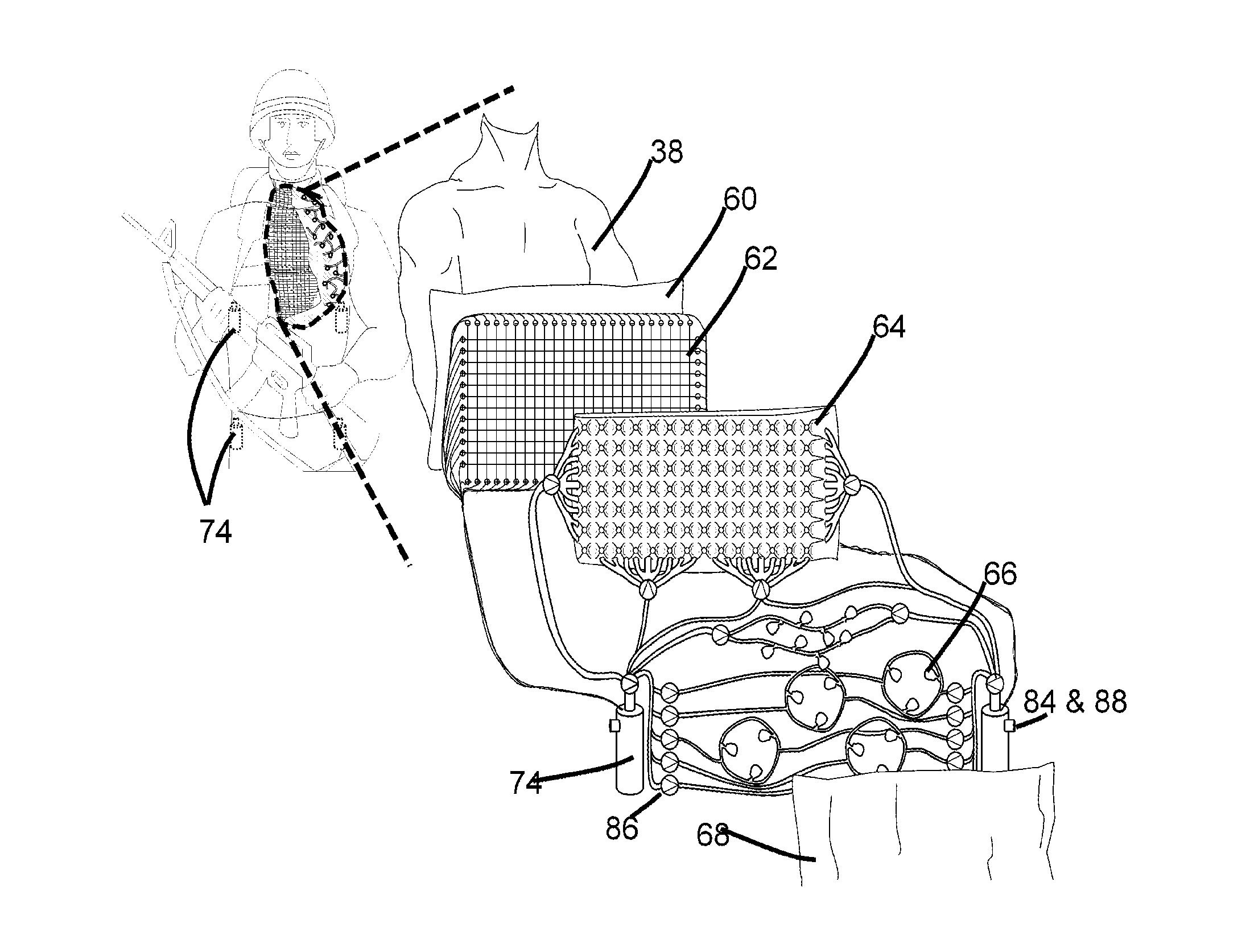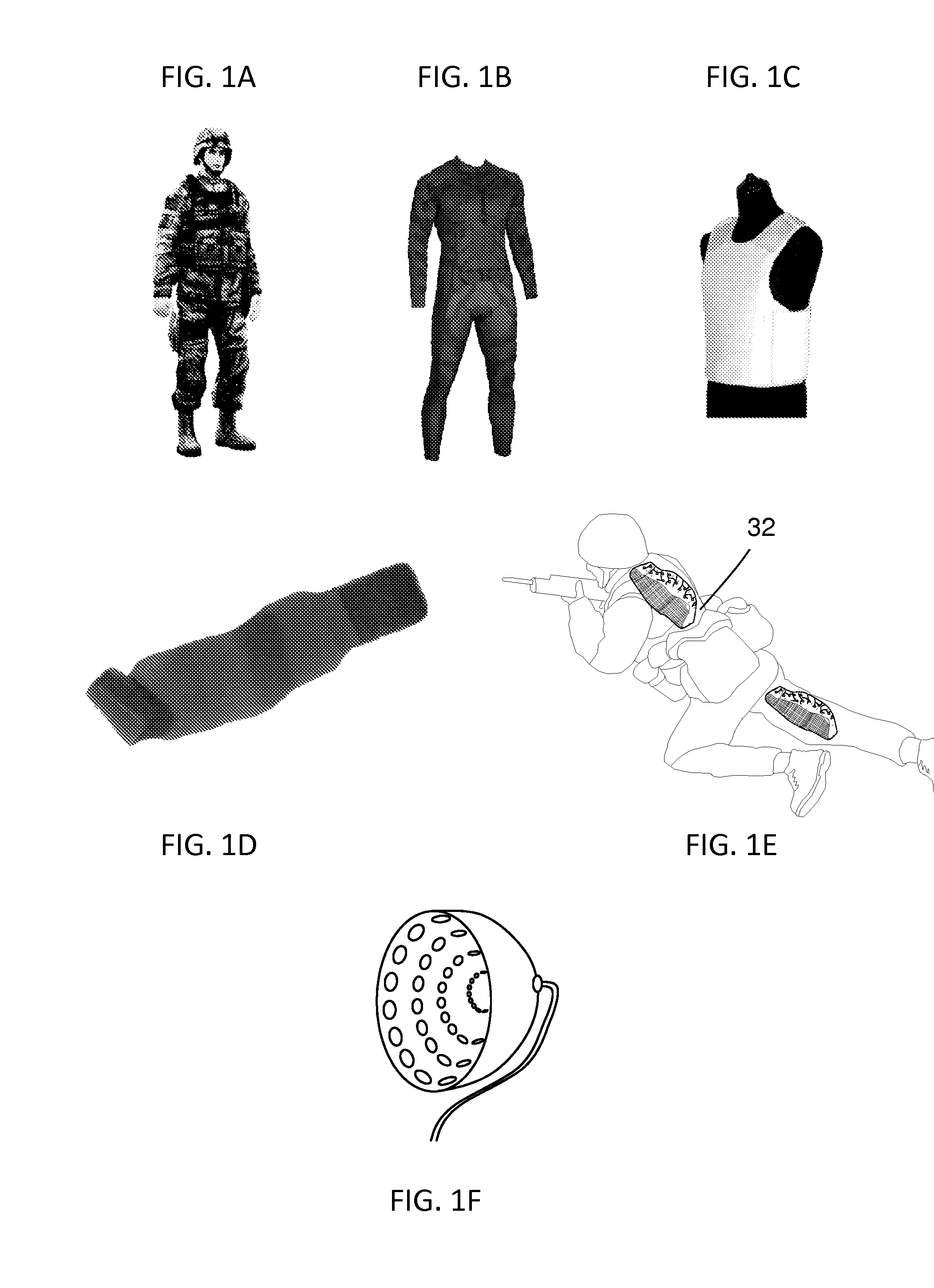Wearable device
a wearable device and vascular technology, applied in the direction of overgarments, target detectors, protective garments, etc., can solve the problems of high incidence of penetrating injuries to the extremities, and high mortality of extremity injuries. to achieve the effect of minimizing hemorrhag
- Summary
- Abstract
- Description
- Claims
- Application Information
AI Technical Summary
Benefits of technology
Problems solved by technology
Method used
Image
Examples
example 1
[0409]A military or law enforcement person encounters a hostile situation and is hit by a fragment. The fragment(s) penetrated the body armor and created hemorrhage. The wounded person might move into a shock state and loose conscience. The accompanying partner is returning fire and is unable to immediately assist. The wounded person is wearing the invention as a jacket underneath his OTV (Outer tactical vest). The impact detection layer registers the impact and immediately triggers the wound sealant to be delivered to the site of the wound (to the entrance and exit wound), and the pressure layer starts building up pressure in that same area, to restrict the loss of blood. In case multiple hits to the wearer occur, the system will respond in the same manner.
[0410]Also, at the same time an encrypted emergency beacon signal identifying the unit and the location (and the status of the injured) is transmitted to a friendly post, an army or police station, or similar.
[0411]In order to tr...
example 2
[0413]A prison guard is stabbed during a riot outbreak. The person is wearing a “vest-version” of the device. The unit detects the penetration of the layers and activates automatically the flow of wound sealant to the site of the wound, the pressurizing of the area, and the broadcasting of an emergency signal. The central control room receives the distress signal, and sends in medical personnel to assist.
example 3
[0414]A diver encounters a life threatening situation during a shark attack, when losing a limb, and starts to faint. The diver is wearing a full body suit, which has the multi-layer device integrated. The impact detection layer detects the massive destruction at the limb and immediately pressurizes the area circularly from all sides, to act as a tourniquet, and decrease the blood loss. At the same time the bladders around the diver's shoulders and the upper part of the body will inflate, in order to increase the buoyance forces, and to raise the diver to the water surface.
PUM
 Login to View More
Login to View More Abstract
Description
Claims
Application Information
 Login to View More
Login to View More - R&D
- Intellectual Property
- Life Sciences
- Materials
- Tech Scout
- Unparalleled Data Quality
- Higher Quality Content
- 60% Fewer Hallucinations
Browse by: Latest US Patents, China's latest patents, Technical Efficacy Thesaurus, Application Domain, Technology Topic, Popular Technical Reports.
© 2025 PatSnap. All rights reserved.Legal|Privacy policy|Modern Slavery Act Transparency Statement|Sitemap|About US| Contact US: help@patsnap.com



